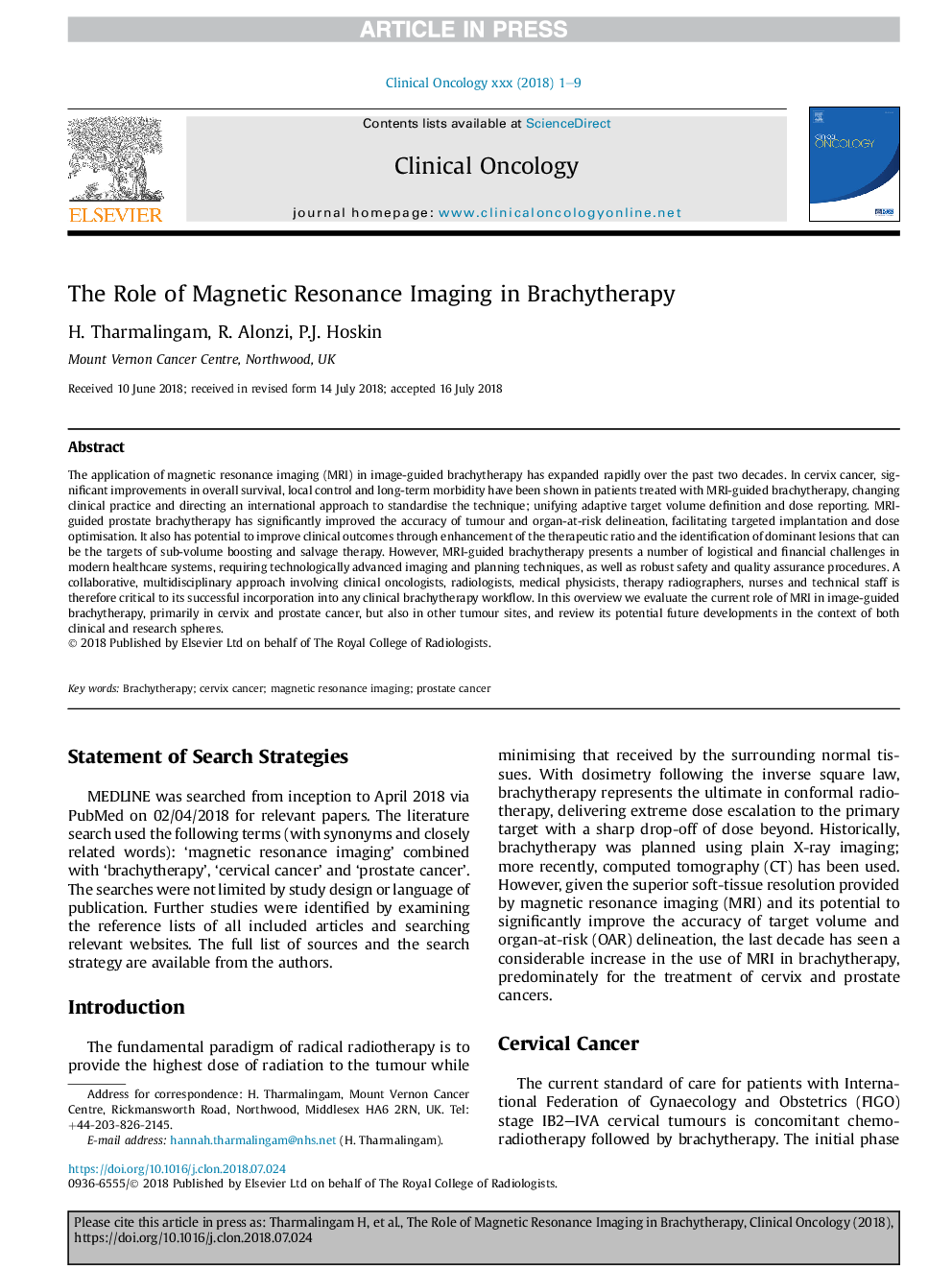| Article ID | Journal | Published Year | Pages | File Type |
|---|---|---|---|---|
| 11013803 | Clinical Oncology | 2018 | 9 Pages |
Abstract
The application of magnetic resonance imaging (MRI) in image-guided brachytherapy has expanded rapidly over the past two decades. In cervix cancer, significant improvements in overall survival, local control and long-term morbidity have been shown in patients treated with MRI-guided brachytherapy, changing clinical practice and directing an international approach to standardise the technique; unifying adaptive target volume definition and dose reporting. MRI-guided prostate brachytherapy has significantly improved the accuracy of tumour and organ-at-risk delineation, facilitating targeted implantation and dose optimisation. It also has potential to improve clinical outcomes through enhancement of the therapeutic ratio and the identification of dominant lesions that can be the targets of sub-volume boosting and salvage therapy. However, MRI-guided brachytherapy presents a number of logistical and financial challenges in modern healthcare systems, requiring technologically advanced imaging and planning techniques, as well as robust safety and quality assurance procedures. A collaborative, multidisciplinary approach involving clinical oncologists, radiologists, medical physicists, therapy radiographers, nurses and technical staff is therefore critical to its successful incorporation into any clinical brachytherapy workflow. In this overview we evaluate the current role of MRI in image-guided brachytherapy, primarily in cervix and prostate cancer, but also in other tumour sites, and review its potential future developments in the context of both clinical and research spheres.
Related Topics
Health Sciences
Medicine and Dentistry
Oncology
Authors
H. Tharmalingam, R. Alonzi, P.J. Hoskin,
